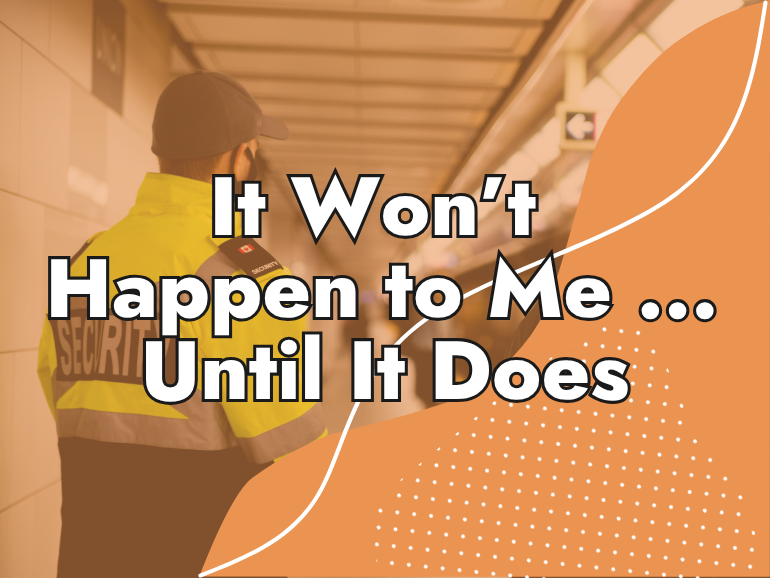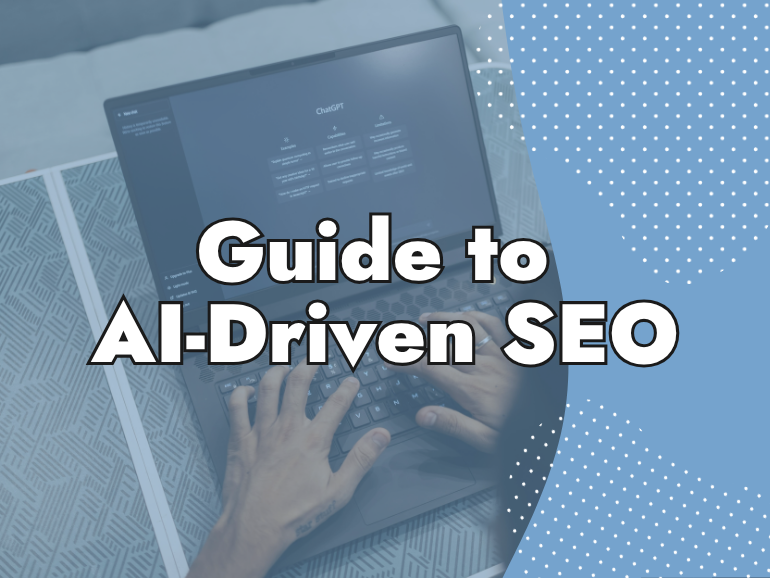Why Website Security Is a Business Growth Strategy (Not Just an IT Concern)
You might think your website is too small or low-profile to need serious protection. But if your site plays any role in attracting leads, building trust, or driving sales, it’s a critical asset worth defending. A security breach doesn’t just disrupt your site. It disrupts your business. In this article, we break down how website security protects your brand, your reputation, and your ability to grow with confidence.
Written by Carissa Krause
Last updated November 17, 2025 • First published July 17, 2025

TL;DR – How Website Security Protects Your Business
- Hackers don’t target big names, they target weak links. Any outdated or unprotected website is fair game.
- A breach can wipe out your SEO, cost you leads, and damage the trust you’ve built with customers.
- Smart security steps protect your digital assets, your reputation, and your ability to grow.
- Investing in website security is not just an IT issue, it’s brand protection, business continuity, and peace of mind.
If your website helps you attract leads, build credibility, or generate revenue, then it’s not just a marketing tool. It’s one of your most valuable business assets.
And like any important asset, it needs protection.
Cybercriminals don’t just go after big corporations. They use automated bots that scan thousands of websites every hour, looking for outdated software, weak passwords, or missing security tools. It’s not about how large your business is. It’s about whether your site is easy to breach.
According to IBM’s 2023 Cost of a Data Breach Report, the average global cost of a breach is $4.45 million and unfortunately even small businesses are now regular targets. In fact, 43% of all data breaches in 2022 involved small and medium-sized businesses. And 60% of those small businesses never recover from a serious attack.
If your site is unprotected or unmonitored, even a small vulnerability can lead to major consequences; like malware on your homepage, stolen customer data, or a sudden disappearance from Google search results.
The good news? Most of this is completely preventable.
In this article, we’ll show you how website security works, why it matters for your brand and bottom line, and what you can do (starting today) to stay protected without needing to be a tech expert.
LIKE WHAT YOU’RE READING?
If these articles are helpful,
imagine what our team
can do for you!


More Traffic. Leads. Business.
I want to show you how SEO can grow your business in ways you haven’t seen before.
More Traffic. Leads. Growth.

I want to show you how SEO can grow your business in ways you haven’t seen before.
Because website security isn’t just an IT concern. It’s a business growth strategy.
“Most cyberattacks are not about targeting specific businesses; they’re about finding low-hanging fruit.”
Tony Perez, cybersecurity expert and former CEO of Sucuri
What’s at Stake? Real-World Consequences of a Website Hack
Website security might feel like a low-priority technical concern until the moment it becomes a very real business problem. Here’s what can happen in just a few minutes:
- Your homepage is replaced with spam or malware
- Customers get redirected to phishing or scam pages
- Your login gets locked out or held for ransom
- Google flags your site as “unsafe” and removes it from search
- Private client data gets exposed or stolen
- Your entire SEO history vanishes overnight
As you can see, when a website is hacked, the damage is often immediate and widespread. It affects more than just the website itself. It impacts your reputation, your search visibility, your sales pipeline, and the trust you’ve built with your customers.
Here’s what business owners often experience in the aftermath of a breach.
Your Website Goes Offline or Displays Malicious Content
Hackers can replace your homepage with spam, adult content, or malware. They may redirect your traffic to scam websites or inject code that silently gathers user data. This is often the first sign of a problem and by then, it’s too late.
Admin Access Is Lost
It is common for attackers to change login credentials or create unauthorised admin accounts. You may find yourself locked out of your own system with no easy way to regain control. In many cases, companies are forced to bring in a developer to manually remove malicious code and recover access. If there is no recent backup, the damage can be irreversible.
Customer Data May Be Compromised
If your website collects contact forms, email lists, or e-commerce orders, that information is vulnerable. A breach can expose sensitive client or customer data, creating potential legal consequences under regulations such as PIPEDA or GDPR. Even the perception that your site is unsafe can result in a loss of confidence that is difficult to rebuild.
Google Flags the Site as Unsafe
Google has no tolerance for compromised websites. Once malware is detected, your domain can be blacklisted. Chrome and other browsers will display a warning that your site may be harmful. This not only eliminates organic traffic overnight, it can also take weeks to have the warning removed even after cleanup.
Leads and Revenue Are Lost During Downtime
If your website is inaccessible or functioning improperly, potential customers cannot complete purchases, submit inquiries, or access important information. A single day of downtime during a product launch or marketing campaign can result in significant lost revenue, along with missed opportunities that cannot be recovered.
Recovery Is Expensive and Time-Consuming
While prevention is relatively inexpensive, recovery is often not. You may need to pay for emergency developer support, security audits, malware removal, help with SEO reindexing, and legal consultations. The average recovery from a ransomware attack in 2023 cost over $1.8 million USD, according to Sophos. And while that figure includes large enterprises, even small businesses face recovery bills in the thousands.
Long-Term Consequences Linger
Even after the site is cleaned up, the effects do not disappear overnight. You may see a long-term decline in SEO performance due to lost rankings. You may receive fewer inbound leads due to damaged credibility. You may also face ongoing customer questions about whether your website is safe. These consequences are difficult to quantify but have a measurable impact on brand growth.
Website hacks don’t just affect websites—they affect entire businesses. And most of the cost comes after the breach.”
Mika Epstein, WordPress Core Contributor and Security Advocate
How Website Security Supports Sustainable Business Growth
Website security isn’t just about avoiding problems. It’s about creating the confidence and stability your business needs to grow.
As your business invests in digital marketing, SEO, online sales, and customer communication, your website becomes more than just a brochure. It becomes the engine behind your revenue, reputation, and operations. And like any engine, it needs to be protected to perform reliably.
When your website is secure, you can:
- Launch marketing campaigns without worrying your site will go offline
- Invest in SEO knowing your rankings (and hard work) won’t disappear from a breach
- Build trust with clients and partners who rely on your professionalism
- Avoid unexpected repair costs that drain resources from growth initiatives
- Focus your energy on scaling instead of recovering from setbacks
Security may not be the flashiest part of your strategy, but it’s one of the smartest. It protects what you’ve already built and clears the way for sustainable, uninterrupted growth.
How Hackers Actually Get In
Most website breaches do not begin with a sophisticated attack. They start with something simple that was overlooked.
Hackers rarely target individual businesses manually. Instead, they rely on automated bots that continuously scan websites looking for known vulnerabilities. These bots do not care how big or small your company is; they are simply looking for an opening.
Understanding how these entry points work is essential to preventing them.
1. Hackers Look for Outdated Plugins and Themes
This is the most common vulnerability. WordPress, which powers over 43 percent of all websites, uses plugins and themes to add functionality and design. But when those components are not updated regularly, they become easy targets. In fact, Patchstack’s 2024 State of WordPress Security Report found that 96 percent of vulnerabilities came from third-party plugins and themes not the core WordPress system itself. If a bot detects an outdated plugin version with a known flaw, it can exploit it in seconds.
2. Hackers Like Weak Passwords and Shared Logins
Hackers use credential-stuffing tools to try leaked username and password combinations across thousands of websites. If your team shares admin logins or uses weak passwords, the odds of being compromised increase significantly. If you’re still using “admin” or a recycled password, your site is vulnerable. Make a plan to use unique usernames and update your strong passwords regularly.
3. Hackers Want Lack of SSL Encryption
SSL (Secure Socket Layer) protects the data exchanged between your website and your visitors. It’s what gives your website the “https” in the address bar and signals to users that your site can be trusted. Without SSL, information submitted through your forms can be intercepted. Visitors may see browser warnings that your site is not secure, and search engines like Google may penalize your rankings. Today, SSL is a basic requirement for every website. It builds trust, protects user data, and supports your visibility in search. Make sure it’s installed, active, and set to renew automatically.
4. Hackers Look For No Malware Monitoring or Firewall Protection
Firewalls and malware scanners act like a protective barrier, blocking suspicious traffic before it can cause harm. Without this layer of defense, your site is vulnerable to bots scanning for weaknesses, hidden login attempts, and infections that spread quietly in the background. If malware goes undetected, it can stay on your site for days or weeks and damage your reputation, leak data, and put your customers at risk. The key is to have a plan in place to monitor for threats and respond quickly when something seems off.
5. Hackers Like Poor Hosting Security
Not all website hosting is created with security in mind. Many budget or unmanaged hosting services skip essential protections like malware scanning, secure server setups, and timely updates. As a result, even well-built websites can be left exposed through no fault of your own. If your hosting provider doesn’t take security seriously, your business is at risk. Make sure you know exactly what safeguards your host has in place, how they handle threats, and whether there are any weak spots leaving your site vulnerable.
6. Hackers Leave You Scrambling if You Have No Backup System
When a breach happens, your backup is your safety net. Without it, recovery can be costly and chaotic. Many business owners discover too late that their website has no reliable backup. That often means rebuilding from scratch, paying for emergency support, or losing valuable data and content. A strong backup system runs in the background, saving copies of your site to a secure location. It ensures you can restore your site quickly and keep your business moving forward, even if something goes wrong.
Simple Steps to Protect Your Website, Brand, and Bottom Line
Here’s the truth: Most websites get hacked because of things that are totally preventable with website security.
Security is not about eliminating risk entirely. It’s about reducing exposure and being ready to recover.”
Daniel Cid, Founder of OSSEC and former CTO of Sucuri
It’s not about needing a full-time IT department or hiring a cybersecurity team. It’s about being proactive and putting a few smart systems in place. If you can handle basic business operations, you can absolutely handle these steps or delegate them to someone who can.
Let’s walk through what works.
Step 1: Make Sure Your Site Has SSL
If your site doesn’t have “https” in the address bar, visitors see a “Not Secure” warning. That alone can kill conversions and it can hurt your Google rankings too. SSL encrypts data between your site and your users. Without it, personal info like emails or credit card numbers can be intercepted. You can check your SSL status using SSL Labs. Most managed hosting providers include SSL. Just make sure it’s active and set to auto-renew.
Step 2: Keep WordPress and Plugins Up to Date
This one is non-negotiable. According to Patchstack’s 2024 report, 96% of WordPress vulnerabilities come from third-party plugins and themes. Not updating is like leaving the door wide open.
Here’s how to keep your WordPress website and plugins secure and up to date:
- Update WordPress Software Regularly – Make sure the core WordPress system is always running the latest version. Updates often include important security patches that keep your site protected.
- Keep Plugins and Themes Updated – Outdated plugins are one of the biggest ways hackers get in. Review your site weekly or monthly and update everything that’s active.
- Remove Anything You’re Not Using – Unused plugins and themes still pose a risk. If you’re not using it, delete it. A leaner website is easier to secure.
- Back Up Before You Make Changes – Always have a recent backup before updating anything. That way, if something goes wrong, you can restore the site quickly.
- Assign Someone to Stay on Top of It – If you don’t have the time or knowledge to manage updates, delegate it to your web team or a trusted provider. Just make sure it’s being done consistently.
Step 3: Use Strong Passwords and Two-Factor Authentication
If your password is “admin123” or you reuse logins across platforms, you’re making it easy for hackers. Do this instead:
- Use Unique, Complex Passwords – Simple or reused passwords make it easy for hackers to break in. Use long, unique passwords that aren’t shared across platforms.
- Avoid Generic Usernames – Never use “admin” as your login name. It’s the first thing hackers try when running automated attacks.
- Turn On Two-Factor Authentication (2FA) – 2FA adds a second layer of protection, like a code sent to your phone. Even if a password is stolen, your site stays secure.
- Limit Who Has Access – Only give login access to people who truly need it. Not everyone needs to be an admin.
- Assign Someone to Manage Access – Regularly review who has login credentials. Remove users who no longer work with you or who have unnecessary permissions.
- Use a Password Manager Tool like 1Password or LastPass – These tools securely store and generate strong, unique passwords for every login, so you don’t have to remember them all. It makes strong security easy for you and your team while reducing the risk of password-related breaches.
Step 4: Limit Who Has Access
One of the most common causes of website security issues is human error. The more people who have access, the greater the chance of a mistake or vulnerability, especially if those users have outdated passwords or unnecessary admin rights.
- Give Access Only When Needed – Every user with a login is a potential risk. Only grant access to people who need it to do their job.
- Use the Right Permission Levels – Not everyone should be an admin. Assign roles based on responsibilities (like editor or contributor) to minimize risk.
- Remove Old or Inactive Users – If someone no longer works with you or doesn’t need access anymore, remove their login right away.
- Review Access Regularly – Set a reminder to check your user list every few months to keep it clean and up to date.
- Assign Someone to Manage Access – Make sure a trusted person on your team is responsible for adding, updating, and removing user accounts.
Step 5: Back Up Your Website Automatically
If your website ever goes down or gets hacked, a backup is your safety net. Without one, you could lose your entire site—including files, content, and leads—and face a long, expensive recovery.
- Set Up Automatic Backups – Make sure your website is backed up regularly without needing to do it manually.
- Choose a Reliable Backup Tool – Use trusted tools like UpdraftPlus or Jetpack Backup for WordPress. These tools are built for ease and reliability.
- Store Backups Offsite – Keep copies of your backups somewhere other than your main hosting server, like Dropbox or secure cloud storage.
- Run Daily or Weekly Backups – The more often your site changes, the more frequent your backups should be. Daily is ideal for active websites.
- Make Sure Restores Are Easy – Choose a system that lets you restore your site quickly with just a few clicks in case something goes wrong.
- Assign Someone to Monitor It – Backups should be checked periodically to make sure they’re running properly and can be restored if needed.
Step 6: Install a Security Plugin to Monitor and Protect Your Site
Your website is one of your most valuable digital assets. Just like you’d lock up your storefront at night, your site needs a layer of protection to keep out threats, especially when no one’s watching.
- Choose a Trusted Security Plugin – Tools like Wordfence, Sucuri, iThemes Security are built specifically to protect WordPress sites.
- Enable Malware Scanning – These plugins regularly scan your site for malicious code or suspicious behaviour and alert you if something is wrong.
- Block Suspicious Traffic – Firewalls built into these plugins help prevent bots and hackers from gaining access to your site.
- Set Up Real-Time Alerts – Get notified right away if there’s a potential issue so you can act before it gets worse.
- Assign Someone to Monitor It – Make sure someone on your team is responsible for checking alerts and keeping the plugin settings up to date.
Step 7: Monitor Uptime and Changes
Not all hacks are obvious. Sometimes the only sign something’s wrong is a slower site, a missing page, or a redirect you didn’t create. Early detection is key to stopping small issues before they become big problems.
- Use a Monitoring Tool – Services like UptimeRobot, Pingdom, or ManageWP can track your site’s uptime and alert you to any issues.
- Get Notified When Your Site Goes Down – Set up instant alerts so you’re the first to know if your site crashes or becomes inaccessible.
- Track Unexpected Changes – These tools can flag major changes, like page removals or unauthorized updates, that might indicate a breach.
- Monitor Site Speed – A sudden slowdown can be a sign of malware or performance issues. Regular tracking helps you catch problems early.
- Assign Someone to Watch the Alerts – Make sure someone on your team receives the notifications and can take action if something goes wrong.
How to Pick a Website Security Plan that Safeguards Your Growth and Reputation
A solid website security plan is not just a technical add-on. It’s an essential part of running and scaling your business online. It’s like having a silent, 24/7 bodyguard for your brand. But what exactly does a good security plan include? And how do you know if your current setup is enough?
Here’s what you should be looking for and why it matters.
1. Regular Updates and Patch Management
Your website runs on dozens of moving parts: WordPress core files, plugins, themes, and server configurations. Those parts get updated often.
A good security plan includes:
- Weekly or biweekly updates for all core software
- Safe staging and testing before major changes
- Removal of unused or outdated tools
This prevents vulnerabilities before they ever become a problem.
2. 24/7 Threat Monitoring and Real-Time Alerts
Cyber threats don’t take weekends off. And if something goes wrong, you want to know immediately not three days later when a customer reports it.
With proper monitoring in place, you’ll get:
- Real-time alerts for suspicious activity
- Malware scans that run daily
- Firewall logs to detect intrusion attempts
It’s not about watching everything yourself. It’s about knowing someone else is.
3. Automated Offsite Backups
Every security plan should include regular backups stored in a different location than your main server. That way, if your hosting account is compromised, your backup is still safe.
Look for:
- Daily or weekly backups
- Offsite storage (Amazon S3, Dropbox, secure cloud)
- Easy one-click restoration if something goes wrong
Backups are your last line of defense but they should never be optional.
4. User Access and Permission Controls
Most security problems are caused by human error. A solid plan ensures your team only has access to the areas they need.
That means:
- Role-based access (admin, editor, contributor)
- Automatic logout for inactive users
- Routine audits of who has login credentials
Keeping control over who can do what prevents mistakes and limits the damage if an account gets compromised.
5. Fast Support When Something Goes Wrong
Here’s the difference between a strong security plan and a generic hosting package: When something breaks, you don’t get passed off to a ticket queue.
You get real support from real people and fast. Look for a provider who:
- Offers guaranteed response times
- Knows your site and setup
- Can take action right away (not just give advice)
Speed matters. Especially when your business is on the line.
6. Confidence, Not Confusion
The goal of a security plan is not to overwhelm you with jargon. It’s to give you peace of mind.
A strong plan lets you:
- Focus on your customers and content
- Launch marketing campaigns without worrying
- Know that your site is being watched, updated, and protected
Security is about business continuity. It’s about protecting your ability to grow without interruption.”
Dre Armeda, Co-founder of Sucuri
Final Thoughts: Protect Your Website Before It Costs You
You shouldn’t have to worry about website security every day. With the right systems in place, you can trust that your site is protected, your team knows how to respond to issues, and your business can grow without disruption. The reality is that many business owners only think about security after something breaks. By then, the damage is already done and you’re left with lost leads, dropped SEO rankings, frustrated clients, and a long and expensive recovery.
If your website plays any role in attracting or serving customers, security is not just a technical concern. It is a key part of your growth strategy.
FAQs About Protecting Your Website
Need Some Extra Website Security Help?
Not sure how secure your website is? Are you investing in SEO, Content and other Digital Marketing but not protecting your hard work through website security?
We’re here to help! You can call us at 1-888-262-6687 to ask us your questions right away or request a free website security audit to find out more about your vulnerabilities before they become a bigger problem.
Carissa Krause
Carissa Krause is a Digital Marketing and Project Specialist at 1st on the List. Over the last 13+ years she has worked in our Abbotsford office with clients on a wide range of projects that include areas like local SEO, project reporting, backlink profile review, content development, strategic planning, and more. Whatever the project may be Carissa focuses on achieving greater efficiencies and putting plans into action. When away from her desk you’ll likely find her drinking all the coffee while sitting on the floor driving cars with her three young boys.
Don’t miss out – get newest posts straight to your inbox!
OTHER ARTICLES WE THINK YOU’LL ENJOY
Partner With Us. Get More Leads.
Stop trying to do it all on your own – reach out to our team and we can discuss marketing strategies that are best suited for your business!
[NO HASSLE, NO PRESSURE, NO WORRIES – JUST MEANINGFUL INSIGHTS]








